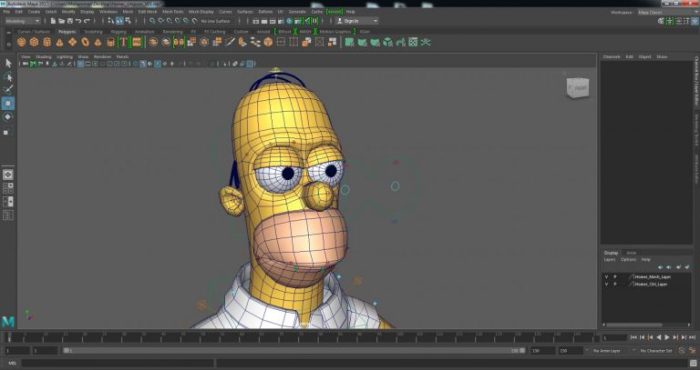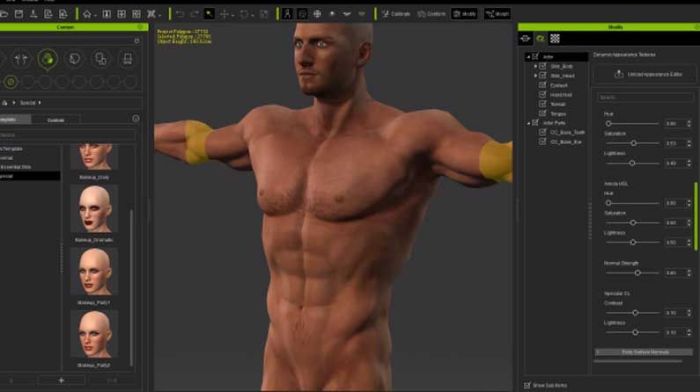How to make your own 3D model? It’s a question that’s sparked the imagination of countless aspiring artists, designers, and creators. The world of 3D modeling is a fascinating one, filled with possibilities for bringing your wildest ideas to life.
From crafting intricate characters to designing stunning environments, 3D modeling offers a gateway to endless creative expression.
This guide is your stepping stone into the world of 3D modeling, providing a comprehensive overview of the fundamentals, techniques, and resources you’ll need to embark on your 3D modeling journey. Whether you’re a complete novice or have some experience, this guide will equip you with the knowledge and skills to create your own stunning 3D models.
Understanding 3D Modeling Basics
3D modeling is the process of creating three-dimensional objects using computer software. It’s like sculpting digitally, where you can build and manipulate shapes to create anything you can imagine, from realistic characters to fantastical creatures.
Fundamental Concepts
Before diving into the software, it’s crucial to understand the building blocks of 3D models.
- Vertices:These are the basic points that define the shape of a 3D model. Think of them as the corners of a cube.
- Edges:Lines connecting two vertices, forming the Artikels of the model.
- Faces:Flat surfaces created by connecting multiple edges. They form the visible parts of the model.
- Polygons:These are the building blocks of 3D models. A polygon is a closed shape formed by connecting multiple vertices and edges. Think of them as the individual tiles that make up a mosaic.
Types of 3D Modeling Software
There are various 3D modeling software programs available, each with its own strengths and weaknesses.
- Polygon Modeling:Software like Blender, Maya, and 3ds Max are designed for creating detailed models using polygons. These programs offer advanced tools for creating complex shapes, textures, and animations.
- Subdivision Modeling:Software like ZBrush and Mudbox excel at creating organic shapes and sculpting details. They work by dividing polygons into smaller subdivisions, allowing for precise sculpting.
- NURBS Modeling:Programs like Rhino and SolidWorks use Non-Uniform Rational B-Splines (NURBS) to create smooth, precise curves and surfaces, often used in industrial design and architecture.
Popular 3D Modeling Software
Here are some of the most popular and widely used 3D modeling software options:
- Blender:A free and open-source software that’s powerful and versatile, suitable for beginners and professionals alike.
- Maya:A professional-grade software known for its robust animation and rendering capabilities, often used in film and game development.
- 3ds Max:Another professional-level software widely used in architecture, product design, and game development, known for its powerful modeling and rendering features.
- ZBrush:A sculpting software renowned for its ability to create highly detailed organic models, commonly used in character design and game development.
Choosing the Right Software
Selecting the right 3D modeling software depends on your specific needs and preferences. Consider these factors:
Features and Capabilities
Each software program offers a unique set of features and capabilities. Some excel in animation, others in sculpting, and some in rendering. Research the software’s strengths and determine if they align with your project requirements.
Learning Curve

The learning curve for 3D modeling software can vary significantly. Some programs are more beginner-friendly, while others require a steeper learning curve. Consider your skill level and available time to learn.
Cost
3D modeling software can range in price from free to thousands of dollars. Consider your budget and choose a program that fits your financial constraints. Free and open-source software like Blender offers a cost-effective solution for beginners.
Recommendations
Here are some recommendations based on different skill levels and project needs:
- Beginners:Blender is an excellent choice due to its free and open-source nature, extensive online resources, and user-friendly interface.
- Professionals:Maya, 3ds Max, and ZBrush are industry-standard software options for professionals working in animation, film, game development, and product design.
- Specific Needs:For organic sculpting, ZBrush is a top choice. For architecture and industrial design, Rhino and SolidWorks are often preferred. For animation, Maya is a widely used professional tool.
Learning the Fundamentals
Mastering the basics is essential for creating successful 3D models. Here’s a step-by-step guide for beginners:
Creating a Basic 3D Model

- Start with a Simple Shape:Begin with basic geometric shapes like cubes, spheres, or cylinders. Most 3D modeling software provides these as primitive shapes.
- Modify the Shape:Use tools like extrusion, beveling, and scaling to modify the shape and create more complex forms.
- Add Details:Once you have the basic shape, you can add details using various techniques like adding loops, subdividing surfaces, and using edge loops.
- Practice:Experiment with different shapes and techniques to develop your skills. There are countless online tutorials and resources available to guide you.
Essential Modeling Techniques
Here are some essential modeling techniques you’ll need to learn:
- Extrusion:This technique involves creating a new face by pulling an existing face along a specific axis. It’s used to add depth and volume to a model.
- Beveling:This technique involves smoothing sharp edges by adding a rounded or chamfered edge. It’s used to create smoother transitions between surfaces.
- Subdivision:This technique involves dividing polygons into smaller subdivisions, allowing for more detailed sculpting and organic shapes.
Understanding 3D Space and Coordinate Systems
It’s crucial to understand how 3D space works. Most 3D modeling software uses a Cartesian coordinate system with three axes: X, Y, and Z. The X-axis is horizontal, the Y-axis is vertical, and the Z-axis is depth. Understanding these axes is essential for positioning and manipulating objects in 3D space.
Creating Realistic 3D Models
To create realistic 3D models, you need to add textures, materials, and lighting.
Textures and Materials
Textures are images applied to the surfaces of a 3D model to add detail and visual interest. Materials define how light interacts with the surface, determining its appearance, such as its color, shininess, and roughness.
- Creating Textures:Textures can be created using image editing software like Photoshop or GIMP. You can also use pre-made textures from online resources.
- Applying Textures:Most 3D modeling software provides tools for applying textures to models. This process involves assigning a texture to a specific material and then mapping it onto the model’s surface.
- Materials:Materials are used to define the properties of a surface, such as its color, shininess, roughness, and transparency. Different materials can be used to create different effects, such as metal, wood, glass, or skin.
UV Mapping and Unwrapping
UV mapping is a process of mapping a 2D texture onto a 3D model’s surface. Unwrapping involves unfolding the model’s surface into a 2D plane, which makes it easier to apply textures and materials.
Lighting
Lighting is essential for creating realistic 3D models. It determines how light interacts with the model’s surface, creating shadows, highlights, and reflections.
- Light Sources:Different types of light sources can be used, including point lights, directional lights, and spotlights. Each light source has its own properties that can be adjusted to create different lighting effects.
- Ambient Lighting:This type of lighting provides a general illumination to the scene, creating a sense of overall brightness.
- Shadows:Shadows are essential for creating a sense of depth and realism. They are created when light is blocked by an object.
Advanced Modeling Techniques
As you gain experience, you can explore advanced modeling techniques to create even more complex and realistic models.
Sculpting
Sculpting involves using digital tools to shape and manipulate 3D models, creating organic forms and detailed features. Software like ZBrush and Mudbox are popular for sculpting.
Rigging
Rigging involves creating a skeletal structure for a 3D model, allowing it to be animated and posed. It involves creating bones, joints, and controls that allow for realistic movement.
Animation
Animation involves bringing 3D models to life by creating a sequence of movements over time. It involves setting keyframes and interpolating between them to create smooth and realistic motion.
Plugins and Extensions
Many 3D modeling software programs allow you to install plugins and extensions to enhance their capabilities. These add-ons can provide new tools, features, and workflows, making it easier to create complex models and achieve specific effects.
3D Modeling for Different Applications
3D modeling is a versatile skill that can be applied in various industries and fields.
Gaming
3D models are essential for creating game environments, characters, props, and weapons. Game developers use 3D modeling to create immersive and engaging virtual worlds.
Animation
3D modeling is used extensively in animation, from creating characters and environments to designing special effects and visual effects.
Architecture

Architects use 3D modeling to create virtual representations of buildings and structures, allowing them to visualize designs, explore different options, and present their ideas to clients.
Product Design
Product designers use 3D modeling to create prototypes and visualizations of products, allowing them to test different designs and materials before manufacturing.
Resources for Learning and Inspiration: How To Make Your Own 3d Model
There are numerous resources available to help you learn 3D modeling and find inspiration.
Online Resources
- Blender.org:The official website for Blender, offering tutorials, documentation, and community forums.
- Autodesk Maya:The official website for Maya, providing tutorials, documentation, and resources for professionals.
- 3ds Max:The official website for 3ds Max, offering tutorials, documentation, and resources for professionals.
- ZBrushCentral:A community forum for ZBrush users, offering tutorials, inspiration, and discussions.
- CGSociety:A large online community for computer graphics professionals, showcasing artwork, tutorials, and discussions.
Tutorials, How to make your own 3d model
- YouTube:A vast resource for 3D modeling tutorials, with channels dedicated to specific software and techniques.
- Skillshare:An online learning platform offering courses on 3D modeling, animation, and other creative skills.
- Udemy:Another online learning platform with a wide selection of 3D modeling courses for beginners and professionals.
Communities
- Reddit:Subreddits like r/blender and r/3dmodeling offer discussions, inspiration, and support for 3D modelers.
- Discord:Many 3D modeling software communities have Discord servers where users can connect, share projects, and ask for help.
Books and Courses
- “Blender 3D: The Official Guide”:A comprehensive guide to Blender, covering all aspects of the software.
- “Digital Sculpting: The Complete Guide to ZBrush”:A comprehensive guide to ZBrush, covering sculpting techniques and workflows.
- “Maya: The Complete Guide”:A comprehensive guide to Maya, covering modeling, animation, and rendering.
Last Word
As you delve deeper into the world of 3D modeling, remember that practice is key. Experiment with different software, techniques, and projects to find your unique style. The possibilities are endless, so let your imagination run wild and enjoy the creative journey.
The world of 3D modeling awaits, ready to be shaped by your vision. So, grab your digital tools and get ready to create something amazing.
FAQ Corner
What are the best 3D modeling software for beginners?
Blender is a popular free and open-source option known for its versatility and powerful features. Tinkercad is another great choice for beginners, offering a user-friendly interface and intuitive tools.
How long does it take to learn 3D modeling?
The learning curve varies depending on your dedication and the complexity of your projects. You can start creating basic models within a few hours, but mastering advanced techniques can take months or even years.
What are some good resources for learning 3D modeling?
YouTube is a treasure trove of tutorials, with channels like Blender Guru, CG Cookie, and The Gnomon Workshop offering comprehensive courses. Websites like Skillshare and Udemy also provide structured learning paths.